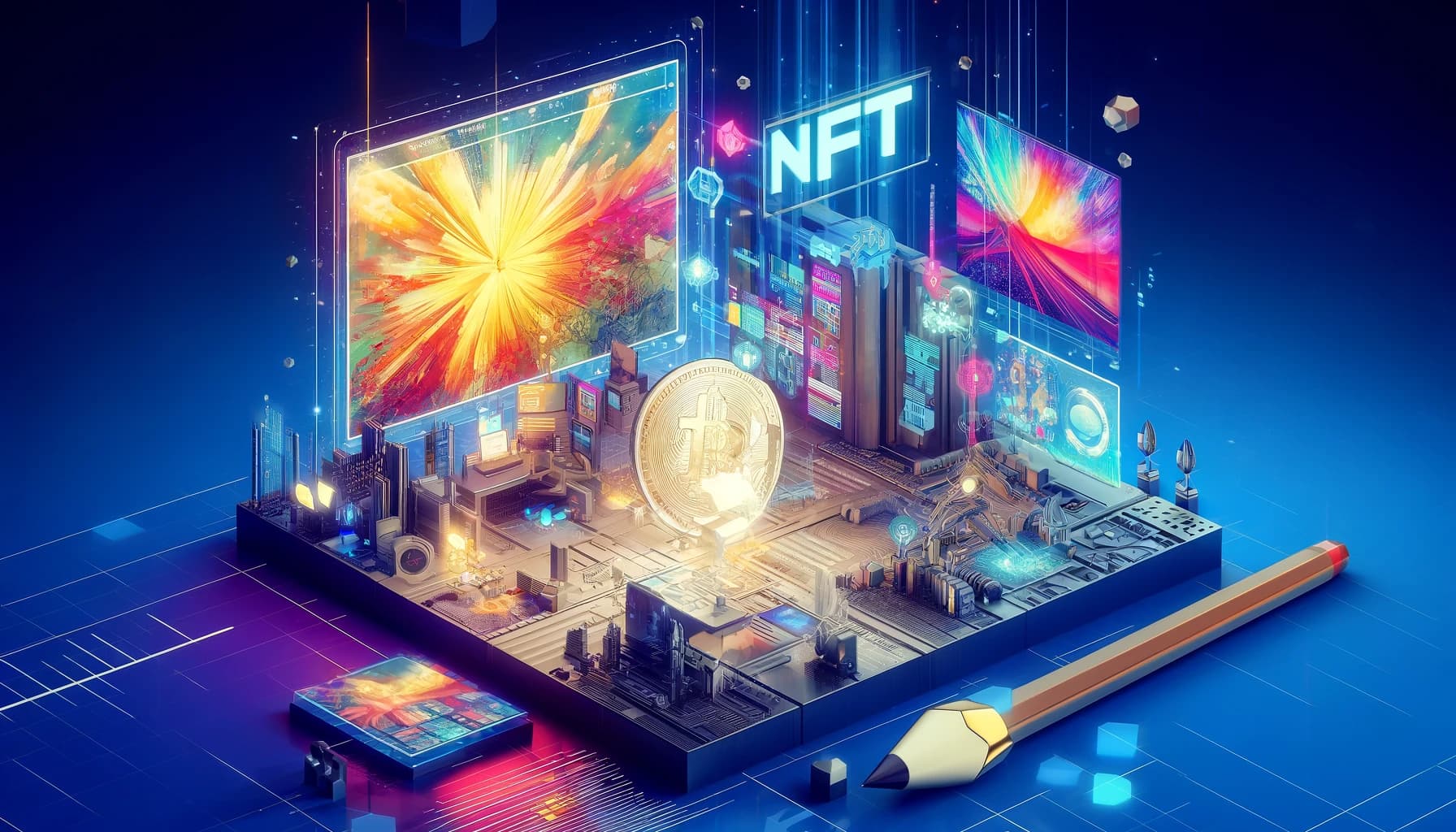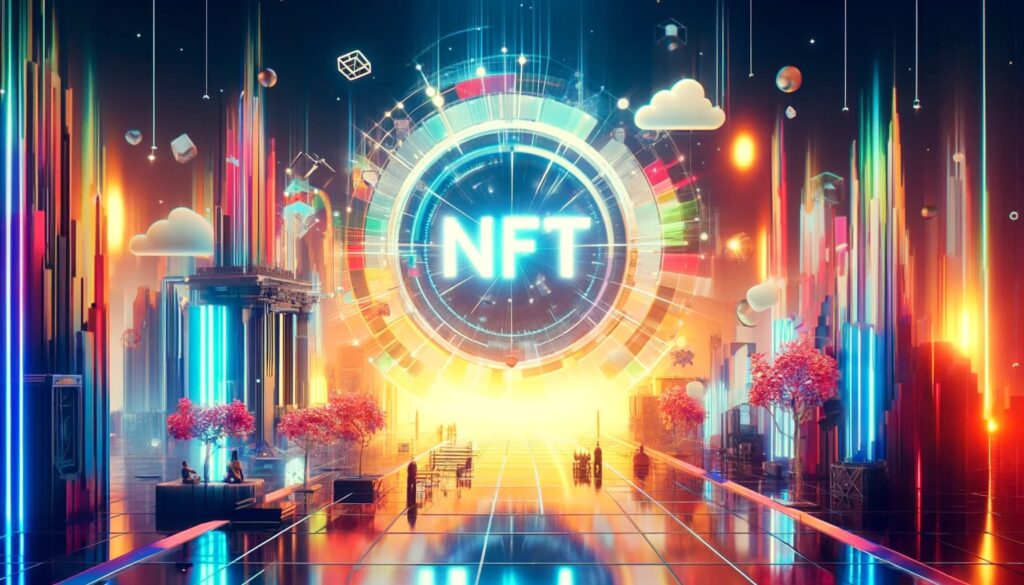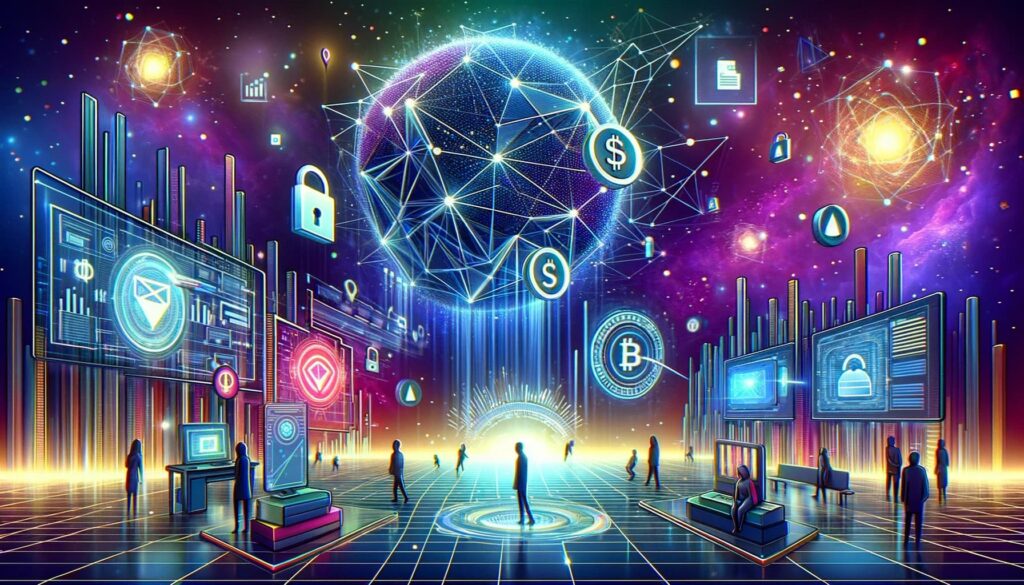NFT Art Buying Guide
The world of NFT art has exploded in popularity, offering a revolutionary way for artists to sell their work and for collectors to invest in unique digital assets. Whether you're an artist looking to mint your first piece or a collector eager to own a one-of-a-kind digital creation, navigating the NFT marketplace can be daunting. This guide will provide you with essential tips and insights to make informed decisions when buying NFT art, ensuring you understand the technology behind NFTs, the platforms to use, and the potential pitfalls to avoid. Dive in and discover how to confidently step into the future of art and digital ownership.
Understanding Scams
To begin with, understanding scams is essential in the world of NFTs, as scammers are constantly devising new strategies to deceive unsuspecting individuals. By familiarizing themselves with common scam techniques, potential victims can develop a cautious mindset and avoid falling prey to fraudulent schemes. The introduction section can provide an overview of these scam strategies, such as phishing, fake marketplaces, and misleading endorsements, which can raise awareness among readers and equip them with the necessary knowledge to identify warning signs.

Moreover, staying informed about NFT scams is of utmost importance to protect oneself and others from financial loss. The introduction can emphasize the dynamic nature of the NFT market and the evolving tactics employed by scammers. It can highlight the significance of staying updated with the latest information and developments, such as new scam variations or emerging trends in scam techniques. This awareness can enable individuals to identify potential risks and take proactive measures to safeguard their investments and personal information.
The introduction section holds immense importance when discussing NFT scams. By providing insights into scam strategies and emphasizing the need for staying informed, it empowers readers to make informed decisions and protect themselves from falling victim to fraudulent practices in the NFT space.
Explanation of NFTs and their Significance in Art
NFTs, or non-fungible tokens, have gained significant attention and importance in the art world due to their function as digital assets representing unique objects. Unlike cryptocurrencies such as Bitcoin or Ethereum, NFTs are indivisible and cannot be exchanged on a one-to-one basis. Instead, they are used to mark ownership of specific items, including art, music, videos, and games, on a blockchain digital ledger.
The significance of NFTs lies in their ability to provide a digital certificate of authenticity and provenance for digital objects. In the past, the art world struggled to establish ownership and value for digital creations, as they were easily copied and shared across the internet. However, by using NFTs, creators and collectors can establish unique ownership and transferability for digital items, just like physical collectors who possess one-of-a-kind pieces.
NFTs allow owners to gain sole possession of prized digital items, providing them with a sense of exclusivity and ownership that was previously difficult to achieve in the digital realm. This ownership can extend to artwork, music albums, video clips, or even in-game items. With NFTs, creators and artists can monetize their digital creations in new and exciting ways, by selling limited edition pieces or creating auctions that provide a platform for collectors to acquire unique digital assets.
NFTs have significantly impacted the art world by introducing a mechanism for proving ownership and establishing value for unique digital objects. By providing digital certificates of authenticity and allowing for sole possession, NFTs have revolutionized the way digital art and other collectibles are bought, sold, and owned, expanding the possibilities for artists and collectors alike in the digital realm.
Brief overview of the NFT market and its growth
The NFT market has witnessed a rapid surge in popularity and growth in recent years, revolutionizing the way digital assets are bought, sold, and owned. Non-Fungible Tokens, or NFTs, have captured the attention of artists, collectors, and investors alike, offering a unique opportunity to tokenize and monetize digital creations. Unlike cryptocurrencies such as Bitcoin or Ethereum, which are interchangeable and have equal value,
NFTs are one-of-a-kind digital assets that represent ownership or proof of authenticity for a specific item or artwork on the blockchain. With the boom in decentralized finance and the increasing interest in digital art, the NFT market has grown exponentially, attracting millions of dollars in investments and creating a new realm for creators to monetize their work. This brief overview will explore the growth of the NFT market, shedding light on its evolution, key players, and potential future developments.
Understanding NFTs
NFTs, or Non-Fungible Tokens, have taken the digital world by storm, revolutionizing the way we perceive and own digital assets. These unique digital tokens represent various forms of art, music, videos, and games on a blockchain.
Unlike traditional cryptocurrencies like Bitcoin or Ethereum, NFTs are non-interchangeable, meaning each token has its distinct value and cannot be exchanged on a one-to-one basis. Think of NFTs as digital collectibles, where each one is a unique object in its own right, making them highly desirable for collectors and creators alike.
One of the primary purposes of NFTs is to enable artists, musicians, and creators to monetize their work in the digital space. By tokenizing their creations on the blockchain, they gain control over their intellectual property, the ability to track ownership, and the possibility of earning royalties every time their NFT is sold or traded.
Moreover, NFTs allow for newfound transparency and authenticity in the world of digital art. They provide a means to prove the originality and ownership of a piece of artwork or a digital collectible, preventing fraud and ensuring artists receive recognition and compensation for their creations.
NFTs offer the opportunity to transform the way we view and own digital assets. By minting unique objects on the blockchain, NFTs allow artists and creators to monetize their work while providing collectors with a secure and transparent means of ownership.
What are NFTs?
NFTs, or non-fungible tokens, are digital assets that represent ownership or proof of authenticity of a unique item or piece of content, such as artwork, music, videos, or virtual goods. Unlike cryptocurrencies like Bitcoin or Ethereum which are fungible and can be exchanged on a one-to-one basis, NFTs are indivisible and cannot be exchanged on a like-for-like basis.
NFTs leverage blockchain technology to establish ownership and ensure the scarcity and uniqueness of the associated digital asset. By being recorded on a blockchain, NFTs provide a transparent and immutable ledger of ownership authentication, making it nearly impossible to falsify or tamper with.
There are various types of NFTs. Art NFTs, for example, have gained significant attention and include digital artwork, animations, and even virtual reality experiences. Music NFTs allow artists to release unique songs, albums, or concert tickets directly to fans, enabling new revenue streams and enhancing fan engagement. Gaming NFTs enable ownership and trade of in-game assets, ranging from characters and items to virtual real estate.
NFTs have become popular investment opportunities and collectibles due to their potential value appreciation and exclusivity. As ownership and authenticity can be proven on the blockchain, NFTs offer new avenues for authentication and provenance in the digital world, making them attractive to collectors and investors. Notable sales of NFTs include the record-breaking sale of a piece by digital artist Beeple for $69 million, the sale of the first-ever tweet by Twitter CEO Jack Dorsey for $2.9 million, and the sale of several virtual properties in the virtual world Decentraland for thousands of dollars each.
NFTs are digital assets representing unique digital goods secured by blockchain technology. Their potential value as investments and collectibles lies in their exclusivity, proof of ownership, and emerging opportunities for digital authentication and provenance in the digital realm.
How do NFTs differ from traditional art ownership?
NFTs, or non-fungible tokens, present a distinct departure from traditional art ownership. One of the key differentiators lies in the digital nature of NFTs. Unlike physical artwork, NFTs exist solely in the digital realm, enabling art enthusiasts to own and display them on digital platforms. This unique characteristic opens up a new world of possibilities, expanding the boundaries of art ownership beyond physical constraints.
Another differentiating factor is the individuality NFTs offer. Each NFT is unique, containing metadata that verifies its authenticity and uniqueness. Unlike traditional art, where multiple copies can exist, NFTs eliminate the possibility of duplication, guaranteeing ownership of a one-of-a-kind digital asset. This exclusivity enhances the value and desirability of NFTs in the art market.
NFT ownership extends its reach to a global audience. Traditional art ownership often confines artwork to specific physical locations, limiting access for enthusiasts worldwide. In contrast, NFTs transcend geographical boundaries, allowing anyone with an internet connection to appreciate and collect art. This global accessibility democratizes art ownership, fostering a more inclusive and diverse art community.
However, NFT ownership does have its limitations. While owning an NFT grants exclusive ownership rights, it does not automatically grant rights for commercial use or reproduction. Unlike traditional art, where prints or copies can be made for commercial purposes, NFTs typically come with restrictions on duplication or commercial utilization, safeguarding the unique value of the digital asset.
The key differences between NFT and traditional art ownership lie in the digital nature, individuality, and global accessibility of NFTs. While NFTs offer unique advantages, such as owning one-of-a-kind digital assets and enabling global engagement, limitations exist in terms of commercial usage and duplication. NFTs revolutionize the art world, paving the way for new possibilities and experiences in the realm of digital ownership.
Benefits of buying NFT Art
Non-Fungible Tokens (NFTs) have revolutionized the digital art market, providing artists and collectors with a new way to buy, sell, and own unique digital assets. NFT art has gained substantial popularity in recent years, sparking a global phenomenon. In this article, we will explore the benefits of buying NFT art and how it has transformed the art industry.
Benefits of buying NFT art:
1. Ownership and Authenticity: One of the significant advantages of purchasing NFT art is owning a unique digital asset. NFTs use blockchain technology to verify the authenticity and ownership of the artwork, providing a secure and transparent platform for artists and buyers. With NFTs, individuals can prove they own an original piece of art without the risk of duplication or forgery.
2. Supporting Artists: NFT art provides a direct avenue for artists to showcase and monetize their creativity. By purchasing NFT artwork, collectors can directly support their favorite artists, providing them with a platform to exhibit their talent and granting them a more substantial share of the sales compared to traditional art marketplaces.
3. Access to Exclusive Art: NFT art unlocks a treasure trove of exclusive digital creations. Artists can experiment with new mediums, styles, and concepts, pushing the boundaries of traditional art. Digital art also allows for interactive experiences, creating immersive worlds and multidimensional pieces that captivate the viewer. By buying NFT art, collectors can gain access to unique creations that might not be available in physical form.
4. Investment Opportunities: NFT art has seen a significant increase in value, making it an intriguing investment option for collectors and investors. As the demand for digital art grows, certain NFT art pieces have sold for astonishing amounts. Investing in NFT art allows individuals to engage with the art world while potentially reaping financial rewards in the long term.
Buying NFT art presents a myriad of benefits, including ownership and authenticity, direct support for artists, access to exclusive creations, and potential investment opportunities. The rise of NFTs has ushered in a new era for the art industry, democratizing the market and sparking excitement among artists and collectors alike.
Researching NFT Art
Researching NFT art involves a detailed process of analysis and evaluation. By following these steps, one can make informed decisions when considering the purchase or investment in NFT artworks.
Firstly, it is essential to research the background and reputation of the artist. This includes examining their previous works, exhibitions, achievements, and recognition within the art community. The reputation of an artist can provide insight into the quality and value of their NFT art.
Next, it is crucial to evaluate the uniqueness and provenance of the artwork. Uniqueness refers to the rarity and originality of the piece. The more unique an NFT artwork is, the higher its potential value. Provenance refers to the history and documentation of the artwork, including its creation process and ownership chain. Understanding the provenance ensures that the NFT is genuine and authentic.
Additionally, assessing the market demand and value of the NFT is essential. Researching the current trends, popularity, and demand for the artist's work can help determine its potential value. This involves examining previous sales records of the artist's NFT artworks and comparing them to similar pieces in the market.
Key factors to consider when researching NFT art include the artist's reputation, scarcity, artistic style, and previous sales records. The reputation of the artist affects the value and desirability of their NFT artworks. Scarcity, or limited edition releases, can significantly impact the value of an NFT. The artistic style of the piece and its appeal to collectors also play a role in determining its market value.
Researching NFT art involves analyzing and evaluating various aspects such as the artist's background and reputation, the uniqueness and provenance of the artwork, and the market demand and value. By carefully considering these factors, one can make informed decisions when engaging with the NFT art market.
Finding reputable platforms for purchasing NFT art
Finding reputable platforms for purchasing NFT art involves a few key steps to ensure a safe and reliable experience.
1. Research: Begin by researching popular platforms known for selling NFT art. Some well-known reputable platforms include OpenSea, SuperRare, Rarible, and Foundation. These platforms have established themselves within the NFT community and have a large user base.
2. Verify reputation: Before making any purchases, verify the reputation of the platform. Look for information regarding the platform's track record, longevity in the industry, and any notable partnerships or collaborations. This can help establish the platform's credibility.
3. User reviews and feedback: Check for user reviews and feedback on forums, social media, and other online platforms. This can provide insights into the platform's reliability, customer service, and overall user experience. Pay attention to any red flags or recurring complaints raised by users.
4. Security measures: Ensure that the platform has proper security measures in place to protect users' information and transactions. Look for features like two-factor authentication, encryption protocols, and secure wallet integrations. This is crucial as it helps safeguard your personal and financial information.
By following these steps, you can navigate the NFT art market and find reputable platforms that offer a safe and secure environment for purchasing NFT art. Remember to always do thorough research, verify a platform's reputation, check for user reviews and feedback, and prioritize security measures when making your decision.
Identifying legitimate artists and projects
When it comes to identifying legitimate artists and projects, there are certain criteria one should consider. Firstly, an established reputation is key. Legitimate artists often have a well-known name in the industry and are respected for their work. Additionally, a professional portfolio is crucial. Artists with a comprehensive and high-quality portfolio showcasing their previous projects demonstrate their skill and expertise.
Positive reviews from past clients can also help in identifying a legitimate artist. Reviews serve as an indicator of the artist's professionalism, reliability, and client satisfaction. Proof of past successful projects is another essential criterion. This can involve evidence of completed works, such as photographs or documentation of exhibitions.
To conduct thorough research on an artist's background, it is important to check their credentials. Look for any certifications, qualifications, or awards that the artist may have received, as these indicate their level of expertise and dedication to their craft. Moreover, affiliations with reputable organizations or institutions can add further credibility to an artist's reputation.
To summarize, when seeking legitimate artists and projects, one should consider criteria such as an established reputation, a professional portfolio, positive reviews, and proof of past success. Additionally, conducting thorough research involving checking credentials and affiliations is crucial to ensure the artist's legitimacy.
Understanding the terms and conditions of the sale
Understanding the terms and conditions of a sale is crucial for both buyers and sellers to ensure a smooth and fair transaction. When engaging in any buying or selling activity, it is important to carefully read and comprehend the terms and conditions that govern the sale. These terms outline important details such as the price, payment terms, delivery or shipping arrangements, return policies, warranties, liabilities, and any other pertinent information related to the sale. By understanding and agreeing to these terms, both parties can avoid misunderstandings, disputes, or legal issues that may arise during or after the transaction. Therefore, taking the time to thoroughly review and comprehend the terms and conditions is essential for a successful and satisfying buying or selling experience
Avoiding Scams
To avoid scams when engaging in NFT (non-fungible token) transactions, there are several actions you can take to protect yourself. Firstly, research the seller thoroughly. Look for reviews or feedback from previous buyers to assess their reputation and reliability. Additionally, compare NFT prices across different platforms to ensure you are getting a fair deal.
It is crucial to keep your keys private. Never share your private keys or seed phrases with anyone, as this information grants access to your NFTs and can be exploited by scammers. be cautious of suspicious links sent through emails or messages. Do not click on them without verifying their authenticity, as they may lead to phishing attempts or malware.
Using strong passwords is essential to protect your NFT assets. Create unique and complex passwords that include a combination of letters, numbers, and symbols. Additionally, enable two-factor authentication (2FA) whenever possible. This adds an extra layer of security by requiring a verification code from a separate device or app.
Lastly, conduct your NFT transactions on reputable exchange markets. These platforms have established reputations and safety measures in place to help prevent scams. Be cautious of lesser-known or unverified platforms, as they may pose a higher risk.
By following these practices - researching sellers and NFT prices, keeping your keys private, avoiding suspicious links, using strong passwords and 2FA, and utilizing reputable exchange markets - you can significantly reduce the risk of falling victim to NFT scams.
Recognizing phishing scams targeting NFT buyers
Recognizing phishing scams targeting NFT buyers is of utmost importance in today's digital landscape. As the popularity of Non-Fungible Tokens (NFTs) continues to rise, so does the lure for scammers looking to exploit unsuspecting buyers. By being able to identify and avoid these scams, individuals can protect their investments and prevent falling victim to deceitful tactics.
One of the common characteristics of phishing scams targeting NFT buyers is the use of fake URLs. Scammers often create websites that mimic legitimate NFT marketplaces or auction platforms, with URLs that closely resemble the genuine ones. By tricking users into entering their credentials or personal information on these sites, scammers can gain unauthorized access and potentially steal funds or sensitive data.
Impersonation is another technique frequently employed by phishing scammers. They may pose as NFT artists, reputable collectors, or even platform administrators, sending out misleading emails or messages that appear to come from legitimate sources. These messages often urge recipients to click on malicious links or disclose personal information, luring them into compromising their security.
Phishing scams targeting NFT buyers often make unrealistic promises. This can include offering exclusive access to highly sought-after NFTs at discounted prices or claiming to provide insider information about upcoming releases. These enticing offers are designed to exploit buyers' desire to be part of lucrative deals, ultimately leading them to disclose sensitive information or make unwise transactions.
By familiarizing themselves with the common characteristics and techniques used in phishing scams targeting NFT buyers, individuals can better protect themselves from falling victim to such fraudulent activities. Being cautious of fake URLs, questioning dubious requests for personal information, and recognizing unrealistic promises are essential steps in avoiding the detrimental consequences of these scams.
Beware of bidding scams on auction platforms
Auction platforms can safeguard themselves from falling victim to bidding scams by incorporating key features that offer market data to customers and enable them to access comprehensive information about all ongoing bids.
By providing market data, auction platforms equip customers with valuable insights into the current market conditions and trends. This information empowers bidders to make informed decisions about their bids, reducing the likelihood of falling for scams or manipulative practices. Additionally, real-time data on bids helps customers to assess the competitiveness of their offers, enabling them to make necessary adjustments.
Implementing features that allow customers to see details of all active bids is crucial for transparency and trust in the auction process. By displaying bid information such as bid price, bidder identity, and bid history, auction platforms create an environment of accountability. This makes it easier for customers to identify suspicious bidding behavior, such as artificially high bids, and report them to the platform.
To determine bid depth and detect artificially high bids, auction platforms can leverage SimpleHash's bid endpoints or Kafka streams. SimpleHash's bid endpoints provide detailed data on bids, including the bid value, time, and bidder information. By analyzing this information, auction platforms can detect bids that deviate significantly from the market average or show repetitive patterns, indicating potential scamming attempts.
Kafka streams, on the other hand, offer real-time data processing capabilities. By monitoring bid data in real-time, auction platforms can identify sudden spikes or anomalies in bid values, which may indicate fraudulent activities. This allows platforms to promptly investigate and take necessary actions to prevent scams and manipulation.
Auction platforms can protect themselves from bidding scams by embracing features that offer market data and allow customers to access detailed bid information. Incorporating SimpleHash's bid endpoints and Kafka streams can further enhance bid depth determination and the detection of artificially high bids. By prioritizing transparency and customer trust, auction platforms can create a secure and fair auction environment.
Avoid clicking on suspicious links in emails or social media posts
In order to avoid clicking on suspicious links in emails or social media posts, it is crucial to follow these steps:
1. Exercise skepticism: Be cautious when encountering emails or social media posts that come from unknown sources or contain unusual content. Scrutinize the source, email address, and content for any inconsistencies or red flags.
2. Don't hesitate to verify: Take the time to verify the legitimacy of the links before clicking on them. Hover your cursor over the link to see the URL destination. If it seems suspicious or unfamiliar, refrain from clicking on it.
3. Check the sender's authenticity: In the case of emails, verify the sender's details such as their name, email address, and the legitimacy of the organization they claim to represent. Be wary of emails requesting sensitive information or urgent action.
4. Update security software: Ensure your devices have the latest security software installed. Regularly update antivirus programs and enable firewalls to provide an additional layer of protection against malicious links and phishing attempts.
The potential consequences of clicking on suspicious links can be severe. By doing so, you expose yourself to the risk of losing assets, such as funds in your bank account or sensitive financial information. Additionally, in the context of blockchain transactions, clicking on malicious links could lead to permanent transactions that cannot be reversed or amended.
To mitigate these risks, it is essential to verify URLs before clicking on them. Avoid untrustworthy websites that may be designed to trick users into divulging personal information or executing fraudulent transactions. When dealing with Non-Fungible Token (NFT) projects, always check prices on authorized trading platforms to ensure accuracy and legitimacy.
By following these precautions and exercising caution, you can protect yourself from falling victim to scams, phishing attempts, and fraudulent activities online.


